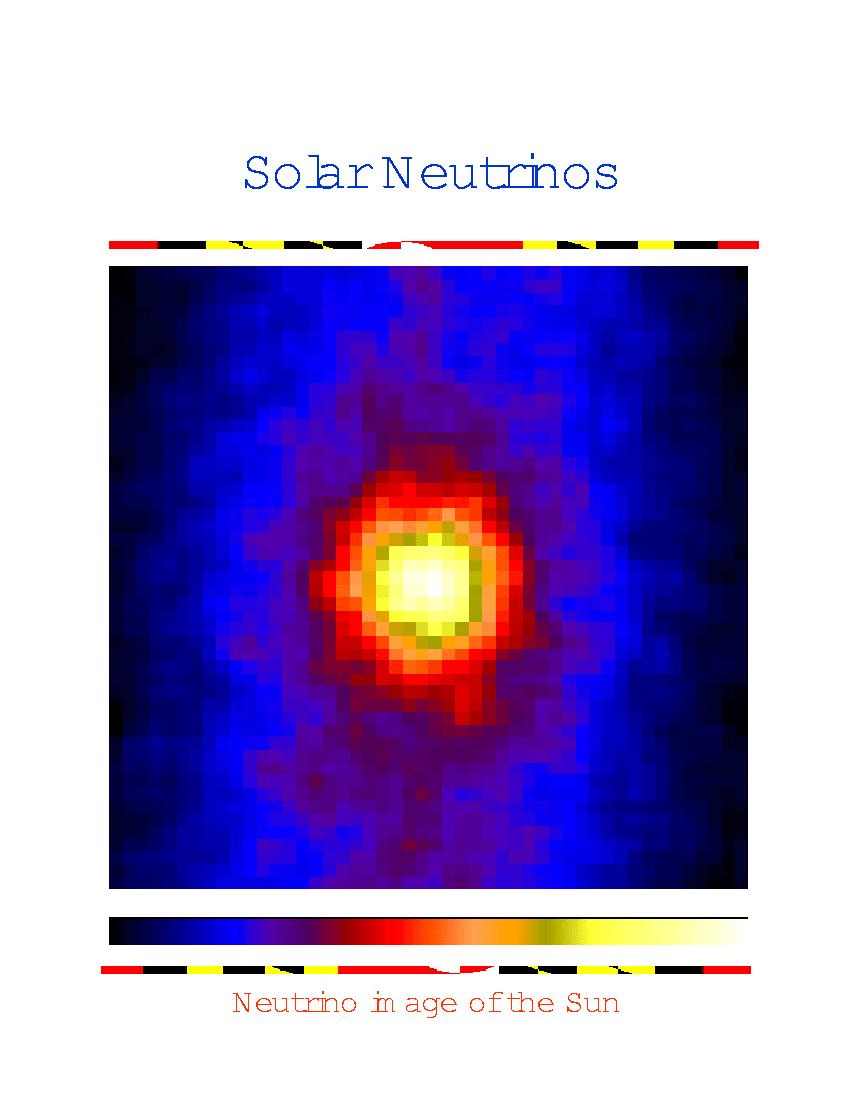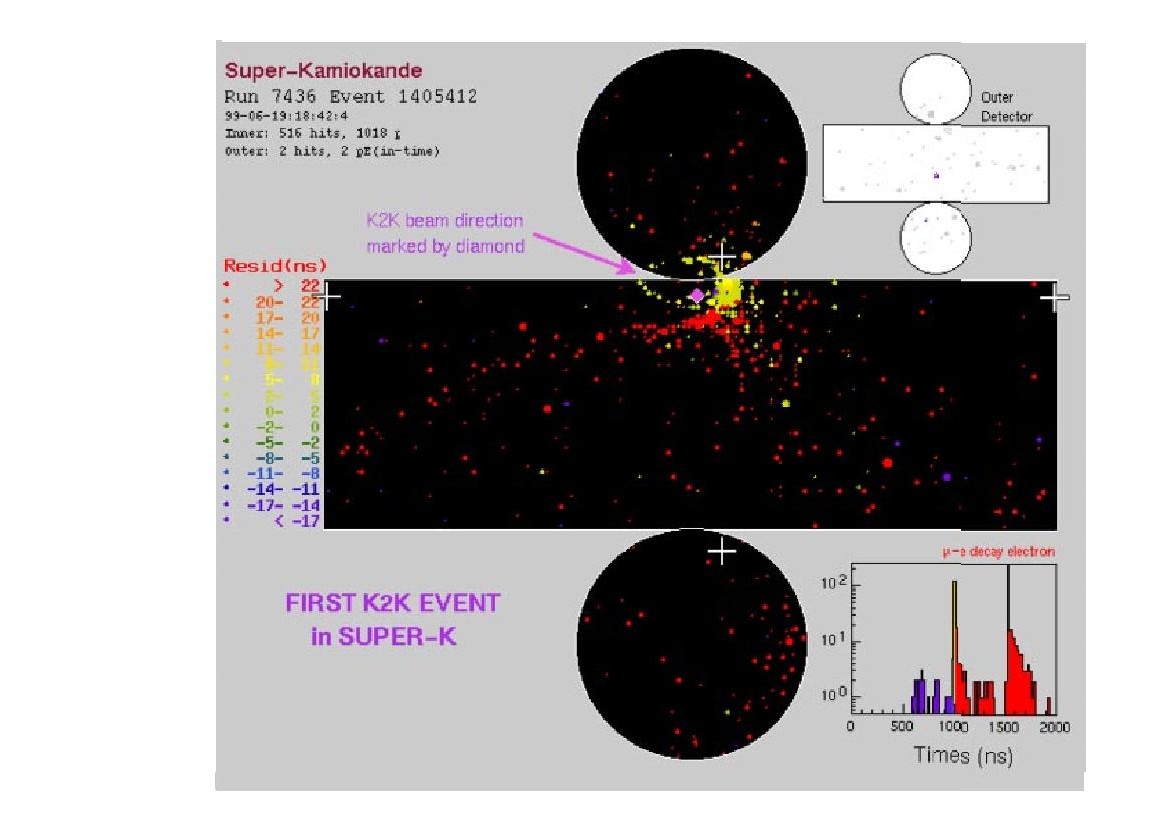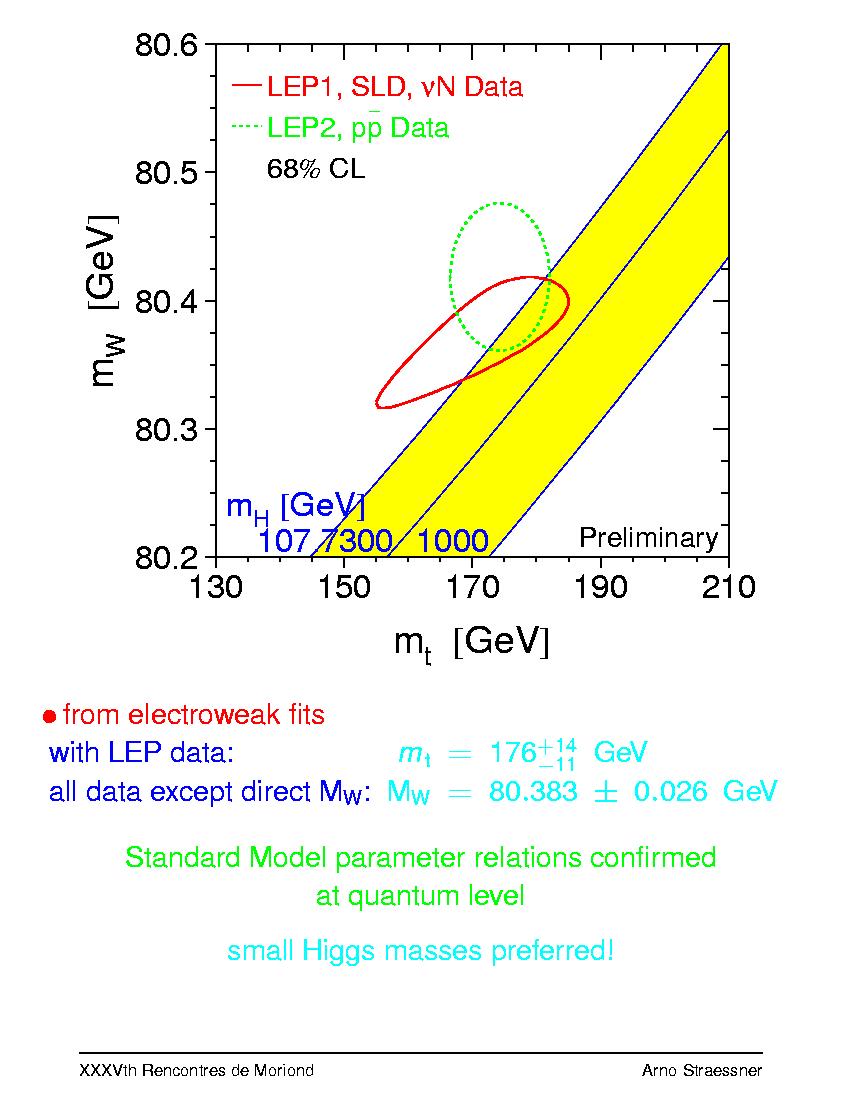XXXV Rencontres
de Moriond , March 11-18, 2000
About this presentation
The present document does
not aim at providing a detailed specialist account of the latest developments
in particle physics presented and discussed in depth at the Rencontres
de Moriond.
Our purpose is rather here to
present in a form accessible to the layman some key points of the meeting,
dealing both with the scientific content and with the specific format which
makes the Rencontres de Moriond a unique venue.
We will thus refer the professional
particle physicist directly to the scanned
slides (or later to the proceedings) where
the details of each presentation can be examined freely.
We also welcome enquiries from
information professionals: beyond the ground material found below, we encourage
them to contact the members of the program committee (the simplest is to
proceed via the Moriond secretariat, see at end of this file).
In the following paragraphs, "background
" information is printed in italics.
Neutrinos still at
the center of attention…
Impressive progress in the experimentally difficult field of neutrino physics
has placed them again in the limelight
Amongst the most discreet existing particles,
neutrinos were first conjectured to account for escaping momentum and energy
in weak decays. Nowadays well established members of the standard model
of electroweak interactions, they still keep some of their mystery. The
central question is indeed their mass, or rather masses;
 figure
caption: The image of the Sun reconstructed from its neutrinos detected
on Earth (slide presented by the SuperKamiokande collaboration)
figure
caption: The image of the Sun reconstructed from its neutrinos detected
on Earth (slide presented by the SuperKamiokande collaboration)
Most direct attempts at measuring the neutrino
mass put lower limits which are consistent with a null value. Indirect
experiments however indicate that the 3 neutrinos, each associated with
a different lepton (electron, muon, neutrino) must possess slightly different
masses. An important result of this is that neutrinos produced in association
with a given lepton (say electron-type neutrinos produced in the thermonuclear
reactions powering the sun) may, after propagating over large distances
convert (oscillate) into neutrinos belonging to another species.
For a long time, evidence for such oscillations,
although growing, was too uncertain. The main reason why those light, and
therefore easy to produce, particles have so long escaped the limelight
is of course their extremely weak interactions (we are crossed each second
by billions of neutrinos originating from the Sun, but without any harmful
effect: they actually cross easily the Earth! -- after all, they even crossed
the Sun to reach us!).
 picture
caption: (slide presented by the K2K
collaboration)
picture
caption: (slide presented by the K2K
collaboration)
The first "long baseline" high
energy event: muonic neutrinos produced at KEK are detected in the Superkamiokande
detector, 250 km away!
This is the prototype of a series
of long baseline experiments planned or in construction (with neutrino
sources at Fermilab or CERN).
There is currently evidence for neutrino oscillation (or disappearance)
in 3 different channels:
- a deficit in the solar enutrino flux is observed by several experiments
(Homestake, Gallex and Sage, SuperKamiokande)
- a deficit of atmospheric muonic neutrinos is observed by SuperKamiokande
- an evidence for the oscillation from muonic to electronic neutrinos
is provided by LSND
We start with the last issue. Both LSND and the similar KARMEN
experiment have refined their measurements, and their conclusions are unchanged:
LSND still claims a signal, while KARMEN finds no evidence. There is not
necessarily a contradiction however, since the parameter ranges covered
are (slightly) different.
The issue of atmospheric neutrinos is pursued by SuperKamiokande, which
now investigates the fate of the missing muonic neutrinos; its findings
suggest that they are converted into another kind of "active" neutrinos
(most likely those associated to the tau lepton), rather than into completely
sterile particles.
Whilewe do not control the atmospheric neutrino flux and
must largely rely on simulations, a direct experiment is being conducted
wiht a controlled man-made muonic neutrino beam, produced at KEK (see fiugre
caption). The first events were presented, and they show indications of
a similar deficit.
It is to be noted that the detemining factor is the ratio L/E of the
distance to the beam energy. In this respect, the CHOOZ experiment, whose
final results were given can be seen as the counterpart of KtoKfor
electronic neutrinos, and indeed this experiment provides some of the strongest
constraints on model building.
The spectrum of solar neutrinos in the Boron region are now investigated
in detail by SuperKamiokande. This experiment now puts limits on the contribution
from neutrinos from the p- 3He reaction. It is quite striking
that the results of SuperKamiokande converge to a lack of dependence of
the observed spectrum both on energy and on distance (seasonal effects).
These data may need more theoretical investigations.
Theory was very present on the neutrino front. On one hand, the phenomenological
discussion in terms of oscillations was reconsidered to show that matter
oscillations impose to consider the full range of mixing angles (rather
than limiting to 45°). Detailed fits to the data are constatntly being
updated.
On a more theoretical side, the understanding of the origin of neutrino
masses, its possible link to supersymmetry, but also the use of neutrinos
as probe of the possible existence of extra dimensions are the subject
of much attention.
Data start to be coming from large neutrino arrays (AMANDA) while prototypes
are being fine-tuned (ANTARES).
Even neutrino lensing was evoqued in this perspective.
More than 4 dimensions
Extra dimensions, long the province of
string theories and characterized by unreachable scales have
suddenly become a studied possibilty, even at the TeV ranges, which makes
them open to experimental investigation. One of the possible
tricks here is to assume that gravity forces propagate in 4+n dimensions,
while the other interactions are confined to our 4-dim world. The neutrinos,
in particular right-handed components would be the only other particles
to escape this fate...
The subject was extensively covered in this meeting, with various theoretical
approaches compared, and their phenomenological consequences studied, both
for neutrinos and for rare processes
Clearly this activity will continue developping boht in its experimental
and theoretical aspects.
Time reversal and associated
topics.
While we know that weak interactions do not respect
parity (P) (in other words, the image seen in a mirror CANNOT be a physical
world, nature CAN tell left from right), the status of time reversibility
(T) at the microscopic level stays open.
In the favoured theoretical framework (local
lagrangian theories), Time reversal is equivalent to reversibility under
the simultaneous operations of P and C (changing all particles into antiparticles).
This CP symmetry, while almost exact, is known for a long time to suffer
some minute exceptions .
CP violation is now better understood, with the observation of
"explicit" CP violation in the K decays, which offers a second independent
CP violation observable (called e'), but the
question now turns to its quantitative understanding. Namely, is the description
in terms of the Standard model and the Kobayashi-Maskawa mixing matrix
sufficient?
The accuracy of the measurement of e' improves,
and both at CERN and FERMILAB. Theoretical debate is raging
to determine whether these new measurements can be fitted within the Standard
Model, and the question is difficult, since it touches both strong interactions
and long-distance effects. It was hotly debated in Moriond. Decisive arguments
may have to come from the observtion of more signals of CP violation, particularly
in heavy mesons, specially the B and Bs.
Promising preliminary data have been shown by both BABAR abd BELLE
dedicated experiments, while data from general-purpose apparatus
(Tevatron and LEP) already gives a glimpse of what awaits us.
A sure indication of the need for CP violation beyond the Standard Model
is the current asymmetry between matter and antimatter; for this, "harder"
sources of CP violation are needed. The cosmological implications on baryon
asymmetry were discussed in details, with several mechanisms now on the
market.
The Higgs hunt
(and other searches)
figure caption:
an exemple of data available from the scanned
transparencies (here from the talk: W mass and Electroweak
fits by A. Straessner for the LEP collaborations)
The red and green colored loops are constraints
derived from current experiments,
and clearly favour a light Higgs particle : the
yellow bands correspond to the standard model expectations for
various Higgs masses (increasing from left to
right).
The low values favoured increase the suspense:
is the Higgs particle (the last predicted element of the standard model)
within reach of the currently running LEP II accelerator,
or will we have to wait until the next experimental
run at Fermilab, and maybe the LHC at CERN?
Compared to last year, the forbidden area has
been restricted both by improved indirect precision measurements and by
pushing the direct lower bound from 90 to 107.7 GeV.
Last but not least, precision measurement of
sensitive parameters, for instance the mass of the well known W and Z bosons
(the equivalent of the photon for weak interactions) show that they are
sensitive to the existence of heavier (not yet discovered) particles.After
allowing the prediction of the top quark mass, these measurements, which
represent an astounding sum of work, allow now to narrow the mass range
for the much sought after "Higgs boson", the missing piece in the standard
model puzzle. The numbers indicate a "low" value, close to the reach of
the LEPII accelerator, currently ramping up in energy around 200 GeV. Compared
to last year, the forbidden area has been restricted both by improved indirect  precision
measurements and by pushing the direct lower bound from 90 to 107.7
GeV.
precision
measurements and by pushing the direct lower bound from 90 to 107.7
GeV.
The suspense is high, as the bounds are getting closer, but the shutdown
of the LEPII facility also approaches...
Another type of on-going searches is for supersymmetric particles. Long
predicted to explain the mass scale difference between gravity (10 19
GeV) and weak interactions (100 GeV), supersymmetric particles should be
characterized by an energy scale of a few TeV, but most models predict
that some of their components will have significantly lower mass (they
also interestingly predict a light Higgs boson).
Although no discovery has been made yet, current
experiments are now moving into the most interesting energy range.
A special word about the Rencontres de Moriond
For more than 30 years now, the Rencontres
de Moriond, initiated by a small group of physicists around Professor Tran
Thanh Van, have brought together scientists from around the world in a
unique conference format.
The size of the meeting is voluntarily limited,
to ensure a maximum of personal contact, and to avoid parallel sessions:
all the presentations occur in plenary sessions, with strict instructions
for experimenters to aim their talks at theorists and vice versa. Considerable
time is foreseen for general discussions between the talks, and special
extended discussions are set up by the organizers as the need arises (this
year on the CP issue). More important however are the private discussions,
in particular between theorists and experimenters, where projects can develop.
An extended break in a long working day, and the setting in a winter sports
resort do a lot to promote a relaxed and confident atmosphere, which facilitates
such communication.
Another striking feature is the wide age range
of participants, but here, the senior staff tends to stay in the audience
and bring comments and suggestions while presentations are made by the
young scientists who conducted the detailed analysis. Often this is their
first international meeting, (and for this European support plays
a crucial role) and the quality of their presentations is impressive.
Further Contacts
The present review is by
essence a subjective presentation of the highlights of the Rencontres
de Moriond Electroweak2000; remarks and criticisms are welcome :
J.-M.
Frère : frere@ulb.ac.be
detailed in formation on this
year's "Rencontres de Moriond" and on future related events can be obtained
from:
Rencontres de Moriond
:
http://www.lal.in2p3.fr/CONF/Moriond/
Rencontres de Moriond
Phone : 33 (0)1 69 15 82 16
LPT - Batiment 211
Fax : 33 (0)1 69 15 82 87
Universite Paris-Sud
91405 Orsay Cedex
FRANCE
or by Email to : moriond@qcd.th..u-psud.fr
 figure
caption: The image of the Sun reconstructed from its neutrinos detected
on Earth (slide presented by the SuperKamiokande collaboration)
figure
caption: The image of the Sun reconstructed from its neutrinos detected
on Earth (slide presented by the SuperKamiokande collaboration)
 picture
caption: (slide presented by the K2K
collaboration)
picture
caption: (slide presented by the K2K
collaboration)
 precision
measurements and by pushing the direct lower bound from 90 to 107.7
GeV.
precision
measurements and by pushing the direct lower bound from 90 to 107.7
GeV.